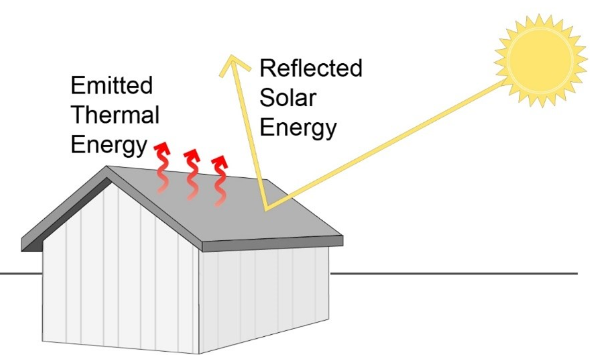Introduction:
Recently, the prerequisite for energy-compelling and content with living spaces has driven the progression of creative philosophies to decrease heat entrance in structures. With natural change reinforcing and energy costs rising, it has become principal to embrace suitable techniques to keep structures cool. The following are a couple of exhibited strategies to restrict heat segment and keep a pleasing indoor environment.

1. Insurance
Genuine security is one of the most incredible approaches to diminishing force move into a construction. Safeguarding walls, housetops, and floors can basically lessen how much force entering the development. Materials like fiberglass, foam, and cellulose are normally used for security, giving a deterrent that dials back heat stream.
2. Clever Housetops and Walls
Presenting shrewd or cool housetops can unequivocally diminish heat ingestion. These roofs are arranged with materials that reflect more sunlight and ingest less power. Light-toned or clever coatings on walls can moreover help in reflecting sun based radiation, keeping the design cooler.
3. Energy-Useful Windows
Windows are a huge wellspring of force gain in structures. Using energy-useful windows with low-emissivity (Low-E) coatings can restrict how much infrared and brilliant light that goes through the glass without compromising ordinary light. Twofold or triple covering and the use of argon gas between sheets further redesign the safeguarding properties of windows.
4. Disguising Contraptions
External disguising contraptions like shades, pergolas, and shades can really hinder direct sunshine from entering windows and entrances. Inside disguising courses of action like blinds, curtains, and wise films can similarly help with diminishing with warming expansion.
5. Green Housetops and Walls
Green roofs and walls, covered with vegetation, can give ordinary security and reduce the overall temperature of a design. The plants ingest sunshine and give cover, while the soil layer goes probably as an extra safeguarding impediment. This keeps the design cooler as well as further creates air quality and diminishes storm water flood.
6. Ventilation
Genuine ventilation is critical in keeping a pleasant indoor temperature. Cross-ventilation, where windows or vents on converse sides of the design are opened, thinks about typical breeze current and diminishes heat advancement. Presenting rooftop fans, exhaust fans, and ventilators can furthermore update wind current and remove hot air.
7. Building Bearing and Plan
The bearing and plan of a construction can essentially impact its power gain. Arranging structures with delayed east-west hatchets restricts direct sun receptiveness during the most steamy bits of the day. Solidifying parts like decks, chambers, and covered external spaces can have ordinary cooling effects and decrease reliance on fake cooling systems.
8. Cool Paints and Coatings
Applying cool paints and coatings to the beyond a design can reduce heat ingestion. These things are arranged with smart properties that return a greater piece of daylight based radiation, keeping the design’s surface cooler.
9. Usage of Warm Mass
Merging materials with high warm mass, similar to concrete, block, and stone, can help in settling indoor temperatures. These materials ingest and store heat during the day and conveyance it during cooler periods, as needs be diminishing the prerequisite for mechanical cooling.
10. Splendid Home Advancement
Consolidating splendid home advancement can smooth out energy use and further develop cooling capability. Quick indoor controllers, automated blinds, and climate control systems can change settings considering inhabitance and external weather conditions, ensuring a pleasing and energy-compelling indoor environment.
Conclusion:
By executing these strategies, building owners and occupants can generally diminish heat gain, lower energy expenses, and make a more reasonable and content with living space. Embracing these creative methodologies works on the individual fulfillment as well as adds to the greater target of regular protection.
.png)

.png)

No comments:
Post a Comment